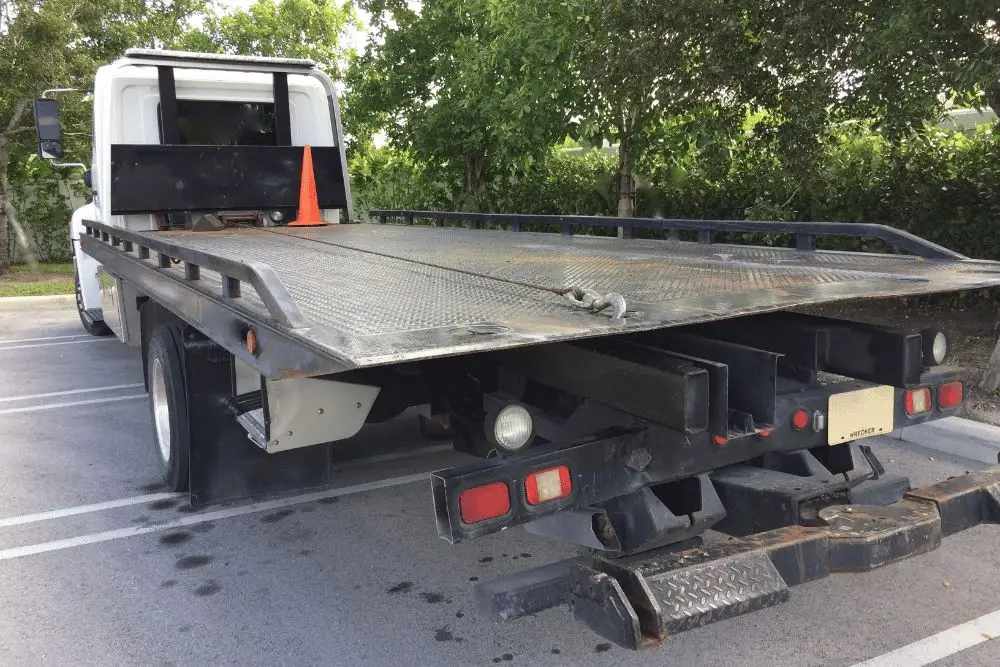Reprinted from WorkSafeBC, published April 2023
Incident summary
In March 2021, a worker was in a parking lot where a client’s disabled pickup truck was parked. He was preparing to load the pickup onto the tilt deck of a flatdeck carrier. The tilt deck was raised and tilted under the back of the pickup. The worker had connected one of the J-hooks on his two winch line chains to the rear axle of the pickup on the driver’s side. He was lying under the pickup attaching the second J-hook to the passenger side of the same axle when the pickup truck rolled backward, pinning him beneath it. The worker sustained fatal injuries.
Investigation conclusions
Cause
- Worker crushed by a pickup truck when it rolled unexpectedly. The worker was lying under the pickup truck, attaching a J-hook to the passenger side of the axle when the pickup rolled back, pinning him between the deck of his carrier and the bottom of the pickup. The worker sustained fatal injuries.
Contributing factors
- Lack of effective safe work procedures. The employer (towing company) lacked a safe work procedure (SWP) for its workers to review prior to loading a client’s vehicle onto a tilt deck. Because the employer lacked a specific SWP for the task, the worker followed his own best practice, developed as he worked. The worker placed the pickup in neutral, then went to the back of the pickup and started connecting the pickup to the winch line, placing himself in the hazard zone when the pickup moved. The employer did not, as required, provide its workers with the information necessary to ensure their safety on the job. It would have been logical for the employer to develop an SWP for loading vehicles onto flatdecks and to ensure that its workers were aware of it and adhered to it. An adequate SWP for this task would have highlighted the steps a worker should follow to load a vehicle safely onto the deck of a carrier, identified hazards associated with the task, and listed ways to eliminate or mitigate the risks related to the hazards. Such an SWP would have enabled supervisors to hold workers accountable to a set procedure. This could have reduced the risk of workers developing their own procedures to complete tasks and placing themselves in potentially hazardous situations.
- Lack of access to manufacturer’s instructions. The employer did not have a copy of the operator’s manual for the flatdeck carrier, so the worker could not refer to the manufacturer’s instructions for safe use of the flatdeck carrier. This manual should have been easily accessible by workers to review. Supervisors could use the manual as reference material when evaluating and instructing their workers, which might have partially compensated for the lack of an SWP to follow. The employer also did not have a copy of the “Carrier Operation: Policies and Procedures” manual, from training sessions it had had its operators attend, available for review by workers or supervisors. Although it was not the manufacturer’s instructions, this document also contained steps that a worker or supervisor could follow or review for safely loading vehicles onto flatdecks.
For more information about this incident, visit WorkSafeBC’s website.
